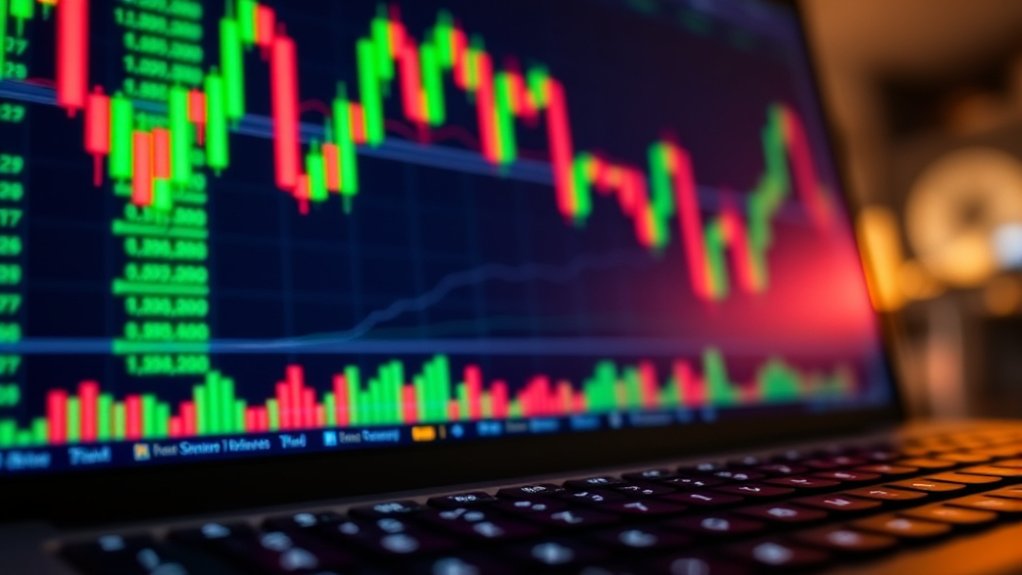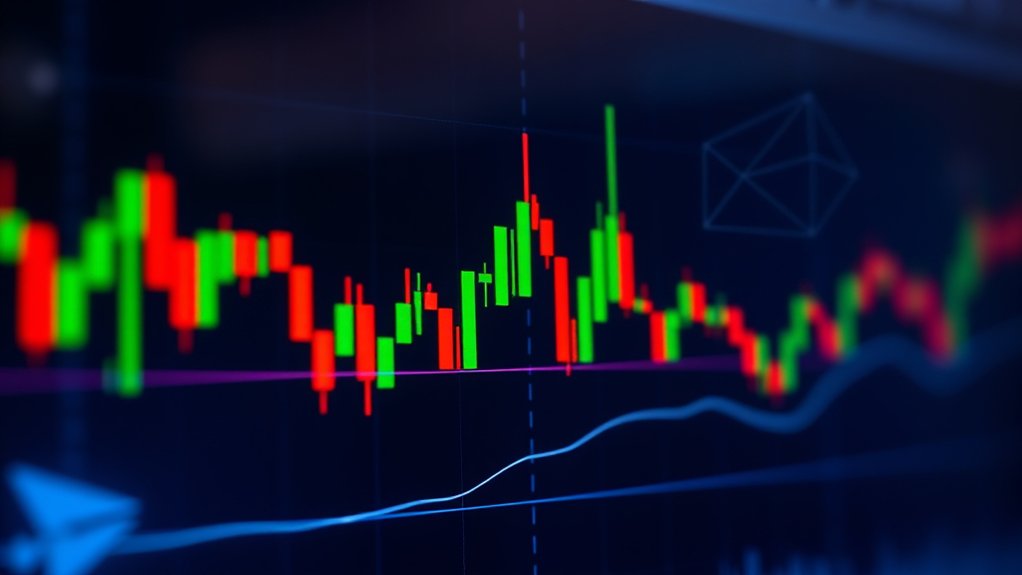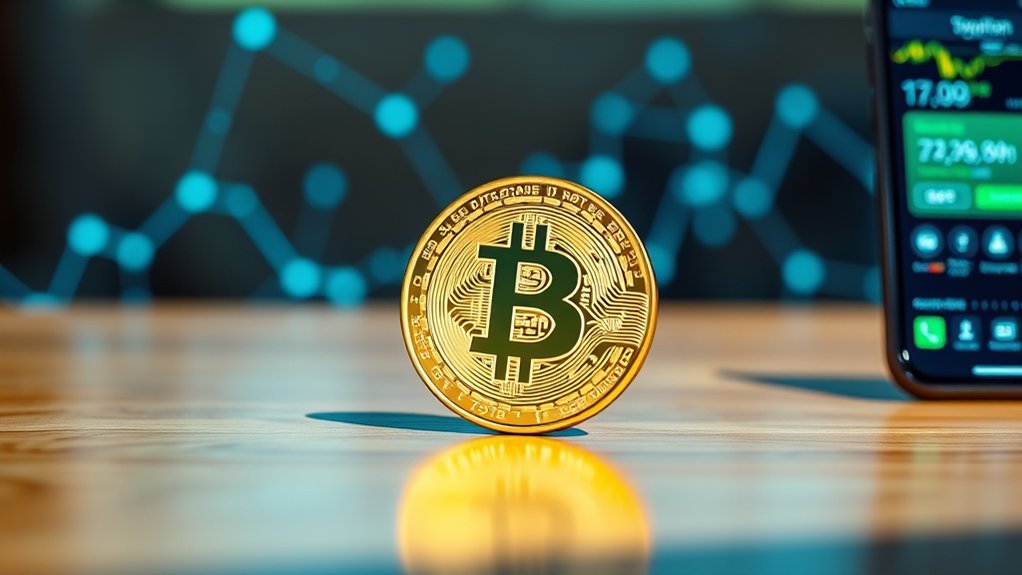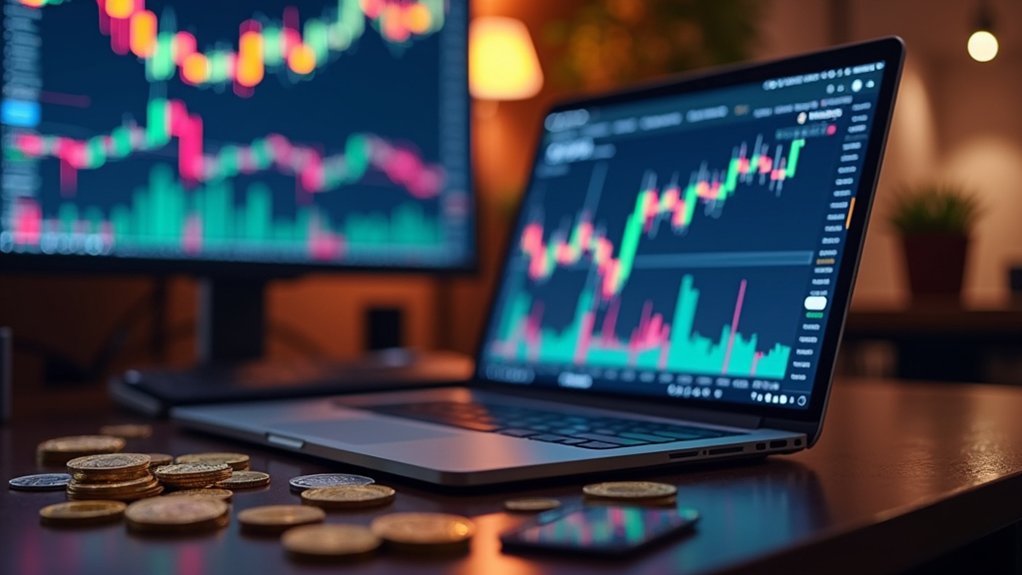Crypto trading volume is a big deal. It tells you how much digital currency is changing hands over a set time, usually 24 hours. High volume = more liquidity, which means you can buy or sell without screwing up the price. Low volume? Good luck selling your stash. But don’t get suckered by fake volumes from wash trading or data discrepancies. It’s a wild ride, and there’s a lot more to unpack if you’re interested in what makes it tick.

In the wild world of cryptocurrency, trading volume is the name of the game. It’s not just a buzzword; it’s a crucial metric that tells you how much of a particular cryptocurrency has changed hands over a specific timeframe, usually 24 hours.
You see, trading volume is like the heartbeat of the market. High volume? That means liquidity is thriving and big trades can happen without causing chaos. Low volume? Good luck trying to sell without tanking the price.
Traders keep a sharp eye on trading volume to make sense of price movements. A price spike accompanied by high volume? That’s a solid signal. But if the volume is low? Well, good luck trusting that bump. It might be just a mirage. Furthermore, market capitalization can provide context to the significance of trading volume in assessing overall market health.
Traders closely monitor volume to decode price action; high volume signals strength, while low volume can lead to illusions.
And let’s not forget the shady underbelly of crypto—wash trading. It’s out there, inflating volumes like a balloon at a kid’s birthday party.
Volume isn’t just important for liquidity; it’s also a barometer of market sentiment. High trading volume usually indicates that investors are feeling optimistic, ready to jump in. Conversely, low volume can signal apathy or fear. It’s a rollercoaster, folks.
In technical analysis, changes in trading volume can hint at potential breakouts or reversals. If price is climbing, but volume is tanking, it might be time to raise an eyebrow. High trading volume can also indicate strong interest in a coin, which can attract more investors. Furthermore, trading volume acts as a key metric for evaluating the potential of a cryptocurrency.
Volume profiles help traders spot areas of interest—think of them as a map to potential treasure.
But, and this is a big but, relying solely on volume can be a trap. Different exchanges report different volumes. Confusing, right? Always cross-check data. Don’t be fooled by misleading figures.
At the end of the day, trading volume is a vital tool. It’s powerful, revealing, but can be a bit of a trickster. So tread carefully, and keep your eyes wide open.
Frequently Asked Questions
How Can I Track Crypto Trading Volume in Real-Time?
Tracking crypto trading volume in real-time? Easy-peasy. Major exchanges like Binance and Coinbase hand over that data on a silver platter.
Want more? Platforms like Bitsgap have fancy tools for the volume nerds. Set alerts for when things get spicy, and keep an eye on those market shifts.
Does Trading Volume Affect Cryptocurrency Price Directly?
Trading volume? Oh, it matters—a lot! More trading means more price action.
High volume? Usually indicates interest, and prices can stabilize.
Low volume? Expect wild swings and not-so-great price predictability. It’s like a rollercoaster without seatbelts.
If volume spikes, it can signal either new excitement or an exhausting trend.
What Tools Can I Use to Analyze Trading Volume?
To analyze trading volume, various tools are at one’s disposal.
Bitsgap offers handy charts. Crypto volume trackers deliver real-time data—super useful. TradeSanta bots? They automate buy/sell signals based on volume.
And don’t forget volume profiles; they reveal where the action is. There are also volume-weighted indicators that help gauge market trends.
Can Low Trading Volume Indicate a Market Manipulation Risk?
Low trading volume? Yep, that’s a red flag for market manipulation.
When trades are thin, even a tiny buy can send prices soaring or crashing. It’s like playing with fire.
Fewer players mean it’s easier for some savvy manipulators to pull the strings.
Unexplained price jumps? Check. Odd trading patterns? Double-check.
To summarize, low volume can make a market a playground for those looking to cash in on chaos. Buyer beware!
How Does Trading Volume Differ Across Various Exchanges?
Trading volume varies wildly across exchanges. It’s like a popularity contest, but with numbers. Bigger exchanges, like Binance, boast massive volumes—everyone wants to trade there.
Meanwhile, smaller ones? Not so much. DEXs are a different beast, with their own quirks and lower volumes. Sometimes, trading pairs can be a total snooze fest, affecting how much gets traded.
In short, trading volume tells a story, and some exchanges are just way more interesting than others.





